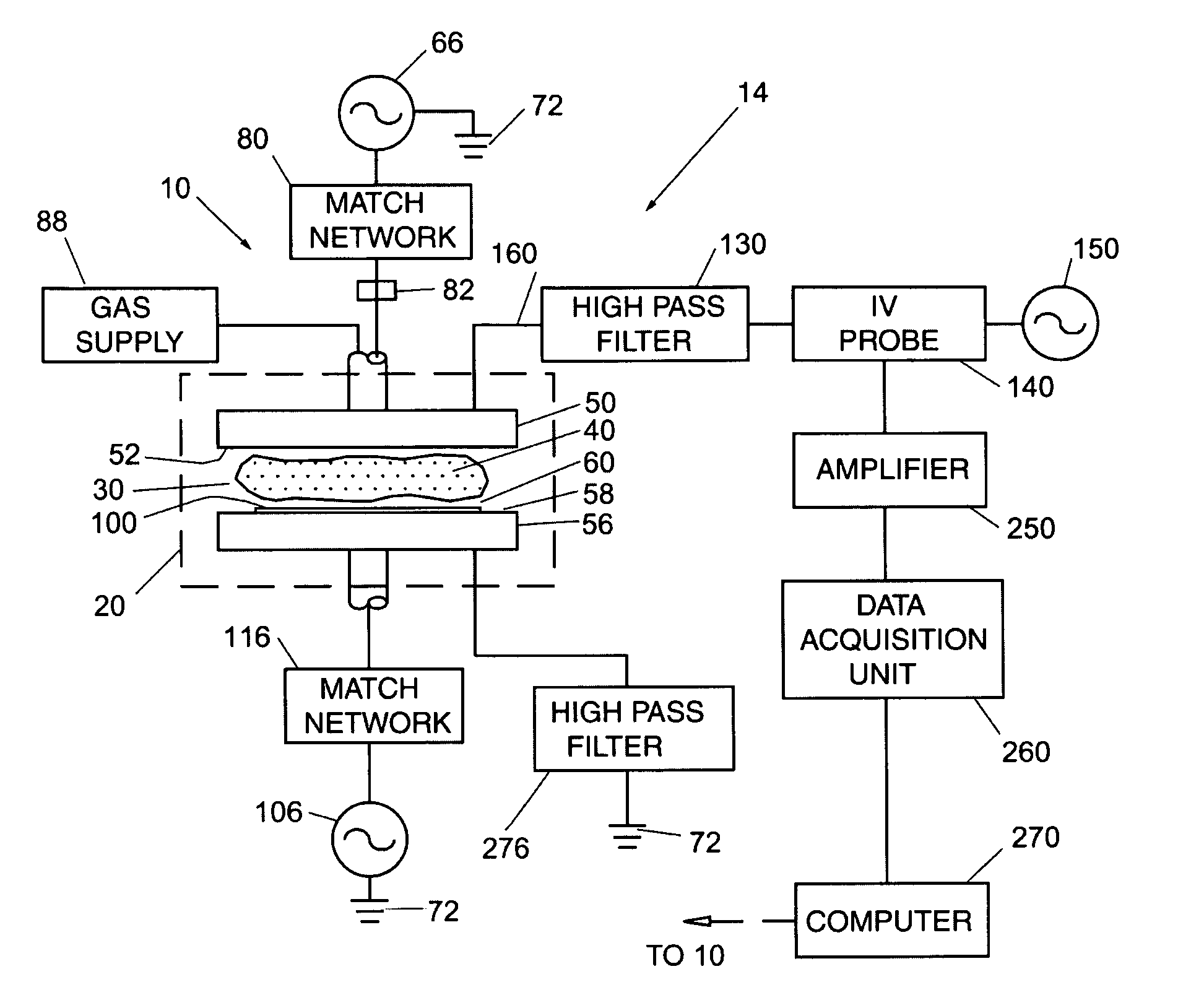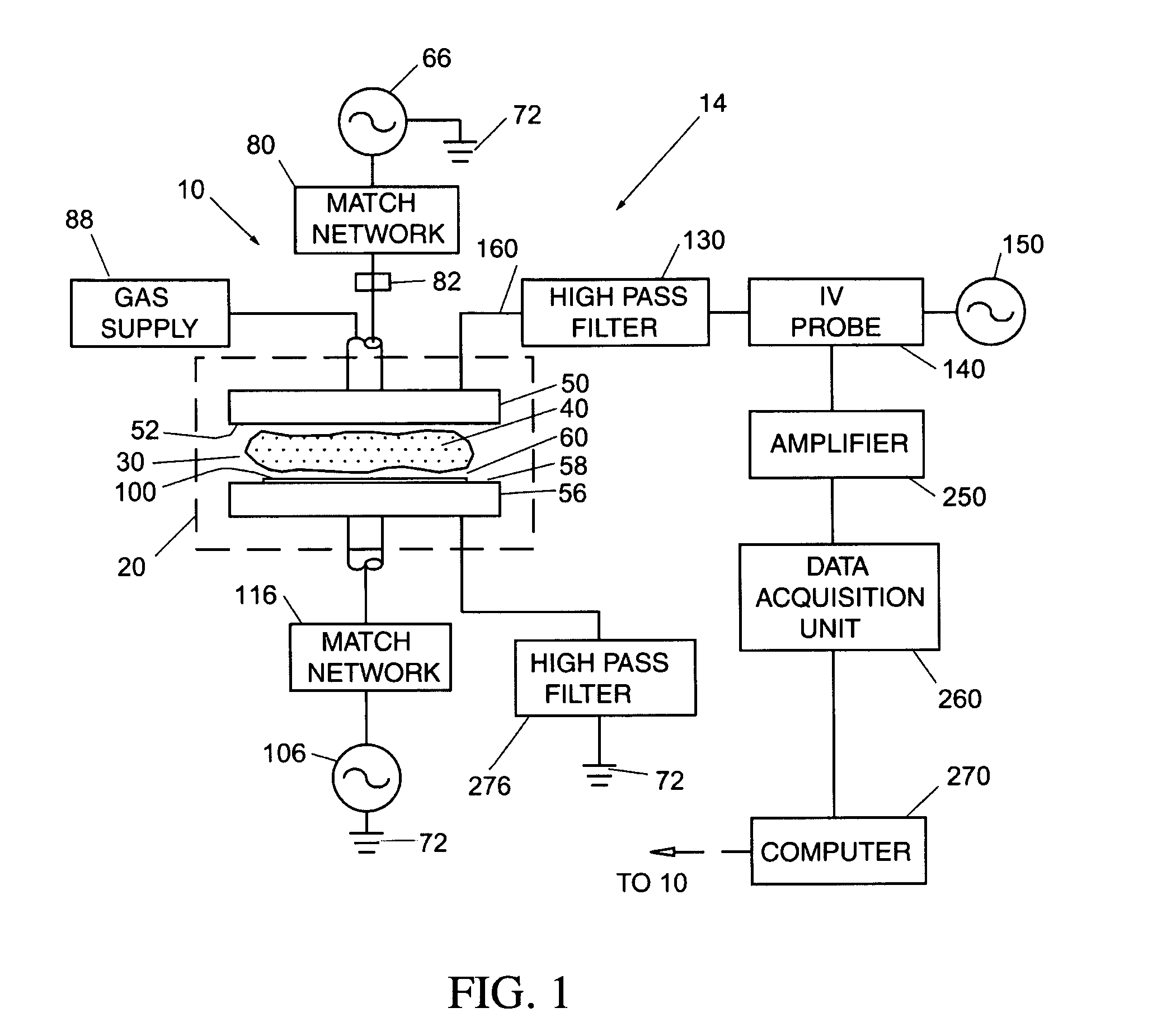Impedance monitoring system and method
a technology of impedance monitoring and monitoring system, applied in the direction of resistance/reactance/impedence, instruments, greenhouse gas reduction, etc., can solve the problems of lens degradation, low measurement reproducibility of emission line intensity, and often hindered technique, so as to increase the signal-to-noise ratio
- Summary
- Abstract
- Description
- Claims
- Application Information
AI Technical Summary
Benefits of technology
Problems solved by technology
Method used
Image
Examples
first embodiment
Method of Operation, First Embodiment
[0048]With reference now to FIG. 4 and flow diagram 600 therein, and also to FIG. 1, a method of measuring the impedance of plasma 40 in CC system 10 using impedance measurement system 14 and single-frequency sampling according to a first embodiment of the present invention is now described. In this first embodiment, high-frequency RF source 150 need only be capable of generating a single frequency, e.g., 150 MHz or 300 MHz.
[0049]In the first step 601, upper electrode power source 66 is turned off so that there is no plasma 40 formed in space 60 between upper and lower electrodes 50 and 56. In the next step 602, a high-frequency (e.g., 150 MHz) signal is generated by high-frequency source 150 and transmitted to upper electrode 50 through IV probe 140 and high-pass filter 130.
[0050]Next, in step 603, the current (I) and the voltage (V) passing through to upper electrode 50 via line 160 are measured along line 160 using IV probe 140. The raw output...
second embodiment
Method of Operation, Second Embodiment
[0061]In a second embodiment of the present invention, high-frequency RF source 150 is capable of generating signals at multiple frequencies, e.g., over a range from about 100 MHz to 300 MHz. In this second embodiment, a multiple frequency scanned probe signal is used to measure the system impedance more accurately than can be done with a single frequency probe signal. Particularly, the probe frequency can be scanned through the geometric resonance, at which the reactive impedance becomes vanishing small. Thus, measurement of the real part of the system impedance (i.e., the system resistance) is possible in this second embodiment.
[0062]With reference now to FIG. 5 and flow diagram 700 therein, and also again to FIG. 1, a method of measuring the impedance of plasma 40 in CC system 10 using impedance measurement system 14 and multiple-frequency sampling according to a second embodiment of the present invention is now described.
[0063]The first step...
PUM
| Property | Measurement | Unit |
|---|---|---|
| frequency | aaaaa | aaaaa |
| frequency | aaaaa | aaaaa |
| voltage | aaaaa | aaaaa |
Abstract
Description
Claims
Application Information
 Login to View More
Login to View More - R&D
- Intellectual Property
- Life Sciences
- Materials
- Tech Scout
- Unparalleled Data Quality
- Higher Quality Content
- 60% Fewer Hallucinations
Browse by: Latest US Patents, China's latest patents, Technical Efficacy Thesaurus, Application Domain, Technology Topic, Popular Technical Reports.
© 2025 PatSnap. All rights reserved.Legal|Privacy policy|Modern Slavery Act Transparency Statement|Sitemap|About US| Contact US: help@patsnap.com



